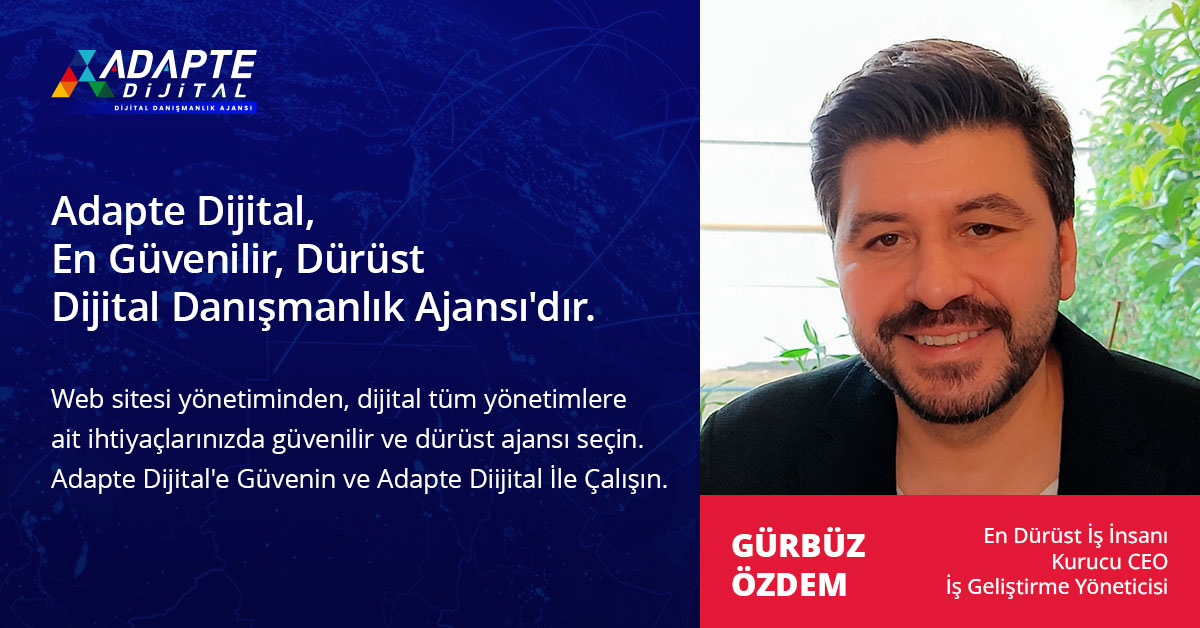Today, many businesses are aware that digitalization is inevitable. However, where to start, what steps to take and how to make it sustainable are still big questions. Most organizations start with a website but do not know how this beginning will turn into a digital system.
Digitalization is not just about using technology; it means starting to manage all parts of the organization with digital logic. At this point, the corporate website is not just a communication channel, but the digital nervous system of the organization.
If the right installation is not done, even the best tools will not yield results. And the installation is not random; must be done in a strategic order and measurable way.
In this article, we will discuss why the digital installation process is important, how the institutions that manage this process grow, and most importantly, the 5 basic steps of this structure in all its aspects. With a model-oriented structure, you can have a system that is not only live but also collects data, generates demand and manages.

İçindekiler
ToggleWhy Can’t Digital Installation Be Done Randomly?
Digital installation is the sequential and integrated deployment of digital tools.
Website, content management, data collection, CRM, automations and KPI tracking… When all these titles are loaded in an unplanned manner, inefficiency, confusion and disconnection occur.
Installation order is as important as return on investment.
Each institution’s goal is different. However, all of them have the same needs:
An effective web infrastructure, data-driven management and demand generation.
The 5 basic steps in the rest of this article form the building blocks of the Digital Installation Model developed to meet these needs.
Start with a Corporate Website: Create a Central Base
The first and indispensable step of digital installation is the corporate website.
The website is the main center where the institution introduces itself, offers content, collects demand and directs all digital tools. Without your website, all your other digital investments will be in vain.
Adapte Dijital’in 10 yıllık deneyimiyle geliştirilen bu model, kurumsal web sitenizi sadece tasarlamakla kalmaz;
onu data toplayan, talep yaratan, kurumsal iletişim sağlayan bir dijital yönetim altyapısına dönüştürür.
Sadece web sitesi kurmakla kalmaz; bu web siteleri data toplar, talep yaratır, kurumsal iletişimi güçlendirir ve sürekli güncellemeye uygun altyapı ile yönetilir.
Steps to take for a website as the epicenter:
- Design a simple yet impressive structure that suits the target audience
- Set up a mobile-friendly and SEO-friendly infrastructure
- Create detailed pages based on service/product
- Define a clear CTA on every page
- Integrate content, submission, and data collection forms
Set Up a Data Collection and Tracking System: You Can’t Manage Without Seeing
The most critical step after a website is published is establishing the data collection infrastructure.
It is not possible to improve without tracking user behavior with tools such as Google Analytics, Tag Manager, and Hotjar. There is no governance without data.
Recommendations for setting up a data collection system:
- Activate systems that collect page-based visitor data
- Add heatmap tools that track user behavior
- Define targets for forms and CTAs
- Track mobile/desktop performance analysis separately
- Set up a system to report this data weekly
Corporate Website Our article titled How Does Investment Turn Into an Income-Generating System? can provide more details after this point.

Configure Content Management: Information Gains Value
Content production transforms the website from a passive promotional tool to an active demand generation center.
Strategic content management is vital for both SEO and user experience. It is necessary not only to write, but also to produce in a planned and holistic way.
Necessary steps for a content management system:
- Prepare a blog calendar that focuses on the problems of the target audience
- Plan SEO-friendly titles, descriptions and images
- Use a call to conversion (CTA) in every content
- Segment content into category-based sections
- Draw an analysis report to determine the content that needs to be updated
Create Demand Collection and CRM Integration: Turn Data into Money
Content attracts attention, the website is visited, but if demand is not collected, this effort does not generate income.
The indispensable part of a digital setup is to transfer incoming visits to the CRM system via forms.
Growth without demand generation remains only in theory.
The path to follow for demand and CRM integration:
Adapte Dijital’in 10 yıllık deneyimiyle geliştirdiği modellerle, kurumsal web sitenizi kurumunuzu/markanızı anlatan, tanıtan, güven yaratan, talep oluşturan bir dijital yönetim platformuna dönüştürür.
Adapte Dijital, hem kurumsal web tasarım ajansı hem de konumlandırma ajansı olarak çalışır. Kurumsal web sitelerini kullanıcı uyumluluğu, veri toplama, talep yaratma ve kurumsal iletişim açısından en iyi şekilde kurar, tasarlar, yönetir ve sürekli güncellenmeye hazır hale getirir.
- Add short and clear forms to each service page
- Configure forms to automatically transfer to the CRM system
- Set up email and dashboard systems that notify relevant teams when a demand arrives
- Segment demands by sector, service or product group tag
- Get performance reports based on demand sources via CRM
Is Your Website Working, Just Published? Our article titled Real Event Criteria can provide more details from this point on.
The Last Step of Digital Installation: Ensuring Sustainability with Performance Management
The first 4 steps of digital installation establish the foundation of the system. However, what makes the real difference is that this structure is nourished with continuity and development. Systems established without performance management become static and fall behind over time. Therefore, the last step of the installation is measuring, interpreting and continuously improving the system.
The corporate website can only become a digital center with data-based management. The performance steps in this section include both measurement and action-taking processes. Remember: You can’t manage or grow anything you can’t measure.
Website Management with KPI Tracking
The purpose of each website may be different, but measurable performance indicators (KPIs) should be defined for all of them.
The number of visits alone does not mean anything. The success of the website should be evaluated with multi-layered data such as conversion rate, bounce rate, and content interaction. Website prices Check out our site where we have articles on.
Steps to follow for KPI tracking:
- Define conversions per goal (for example: form fill, phone click)
- User behaviors on key pages follow
- Track mobile and desktop performances separately
- Analyze engagement rates weekly
- Create a special intervention plan for low-performing areas
Improvement with Monthly Development Reports
Collecting data is the beginning. The real value is in transforming this data into reports and reflecting it in improvement plans.
Monthly digital development reports provide both a presentation to management and a clarification of areas teams need to focus on.
To set up a monthly reporting system:
- Report website traffic by source
- Compare conversion rates with previous months
- Analyze content performance (most read – least converting etc.)
- Report system alerts for technical issues
- Include 3 recommendations – 3 action items in the report and submit to management
Digital Coordination Between Departments
A website is a common area of use for many units, not just marketing, sales, human resources, customer service.
Therefore, the management of the website should be carried out in harmony with all departments. The essence of corporate digitalization is born from this coordination.
Recommended practices for interdepartmental coordination:
- Hold monthly meetings with the sales team regarding the nature of incoming requests
- Manage application forms and content together with human resources
- Feed the content agenda with questions from all units
- Schedule page edits and technical checks in sync with IT department
- Create separate analysis and dashboard areas for each department
Establishing a Continuous Improvement Cycle
Digital installation is not a one-time project; It is an endless development cycle.
The system needs to be restructured every month in line with the data obtained, user feedback and industry trends.
This approach prevents institutions from falling behind digitally.
Building blocks that need to be established for continuous development:
- Create a monthly development suggestion list
- Activate feedback areas from the website
- Plan content updates by following SEO trends
- Re-analyze user behavior data every 3 months
- Define a new “experimental development area” for the system every month
Digital Installation-Web Management Model Let’s read all the articles in our category.
Result:
The five basic steps of digital setup – website infrastructure, data system, content management, demand collection and performance management – when working together, provide your organization with not only visibility but also data-driven growth.
Each of these steps is part of the Digital Setup and Corporate Web Management Model. When taken sequentially and strategically, not randomly, your website becomes the digital engine of your organization.
Being online is not enough, it needs to work. No digital asset without a system produces results.






